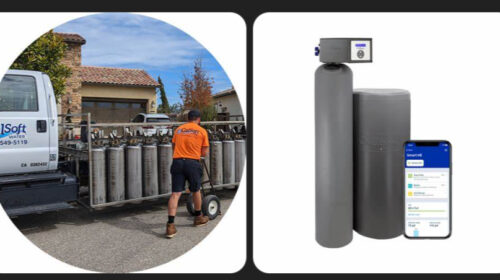Whole House Water System Resource Center | OC Handyman Services
Maintaining your whole house water filtration and softening system isn’t complicated — but it does require consistency. Many homeowners invest in these systems and then forget about them entirely, only to be reminded when their water pressure drops, their dishes spot, or the shower starts feeling harsh again.
This article breaks down the basic maintenance tasks you should expect, how often they need attention, and how to avoid problems that could shorten the lifespan of your system or reduce its performance.
🧼 Sediment and Carbon Filter Replacement
Your sediment and carbon filters are your first line of defense against particulates, rust, sand, and chemical contaminants. If you wait too long to replace them, water flow will slow, and your softener or plumbing may suffer damage.
Typical filter change schedule:
- Sediment filter (5–10 micron): Every 3–6 months
- Carbon filter: Every 6 months (some stretch to 9–12 depending on use and water quality)
Be sure to:
- Keep a few backup filters on hand (especially if you have guests or seasonal spikes in water use)
- Learn how to depressurize and swap filters safely
- Reset your shut-off valves if your system allows filter changes without shutting down the home’s water
🧂 Salt or Potassium Chloride Refills
If your water softener uses a brine tank, you’ll need to add salt (or potassium chloride) regularly to keep it working.
Rule of thumb:
- A 4-person household might go through a 40-lb. bag every 4–6 weeks
- Homes using potassium chloride may use slightly more volume and incur higher cost, but it’s more eco-friendly and lower in sodium
Monitor the salt level in the brine tank — it should never drop below halfway.
📉 Pressure Monitoring
Your home’s ideal water pressure is typically between 55–70 PSI. In La Habra Heights and many SoCal cities, pressure often exceeds 100 PSI, which is too much for faucets, appliances, and valves.
Checklist:
- Use a spigot-mounted pressure gauge monthly
- Check pressure both before and after the pressure regulator (if installed)
- Test at least once before and after each major change (filter swap, new appliance, landscaping work)
If your pressure regularly exceeds 80 PSI after the regulator, it may be failing or improperly set.
🔄 Bypass Valve Use (Seasonal or Emergency)
If your system has ball valves or bypass shunts (as recommended in 0259), test them periodically to ensure they’re still functional. These allow you to bypass your regulator, filters, or softener if needed — especially helpful during:
- Emergency plumbing repairs
- Fire threats when high-pressure hose usage is required
- Temporary system failure (filter clog, leak, etc.)
🛠 Real-World Maintenance Schedule
Here’s a sample quarterly maintenance rhythm for a 2,000 sq. ft. SoCal home:
| Task | Frequency |
|---|---|
| Sediment filter change | Every 3 months |
| Carbon filter change | Every 6 months |
| Salt refill | Monthly (check every 2 weeks) |
| Pressure check | Monthly |
| Full valve & spigot test | Quarterly |
This rhythm may vary depending on how many people live in the home, local water conditions, and whether your system includes RO (reverse osmosis) filters or UV sanitizers.
✅ Final Tip
Add a Google Calendar reminder or use a whiteboard in your garage or laundry room to track filter changes and salt refills. A little attention each month can extend the life of your entire system.


Leave a Reply